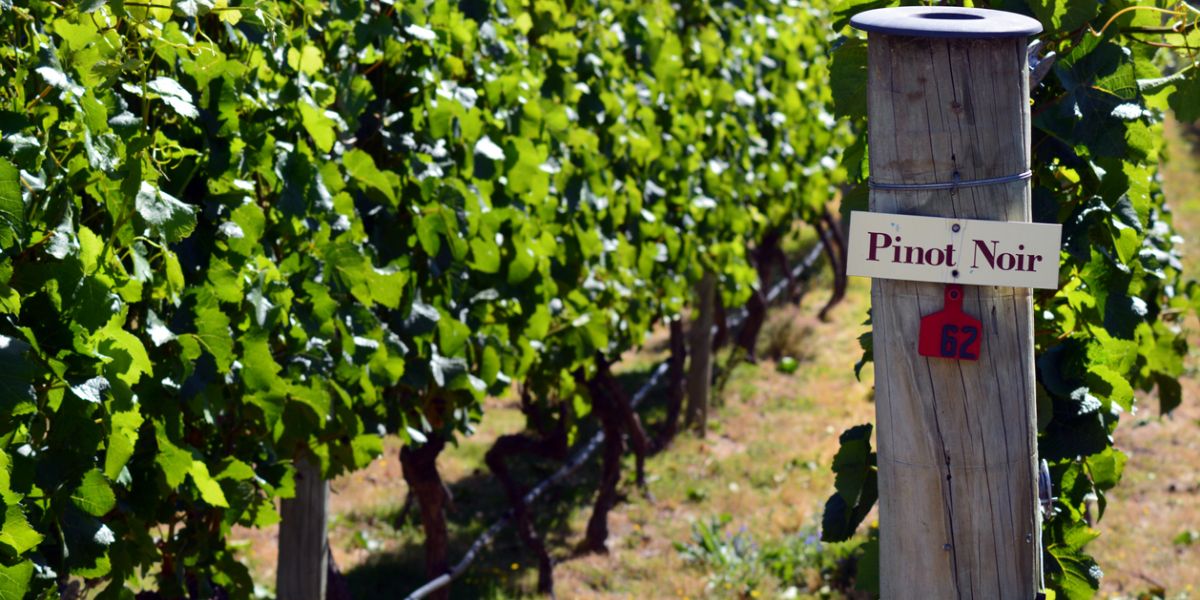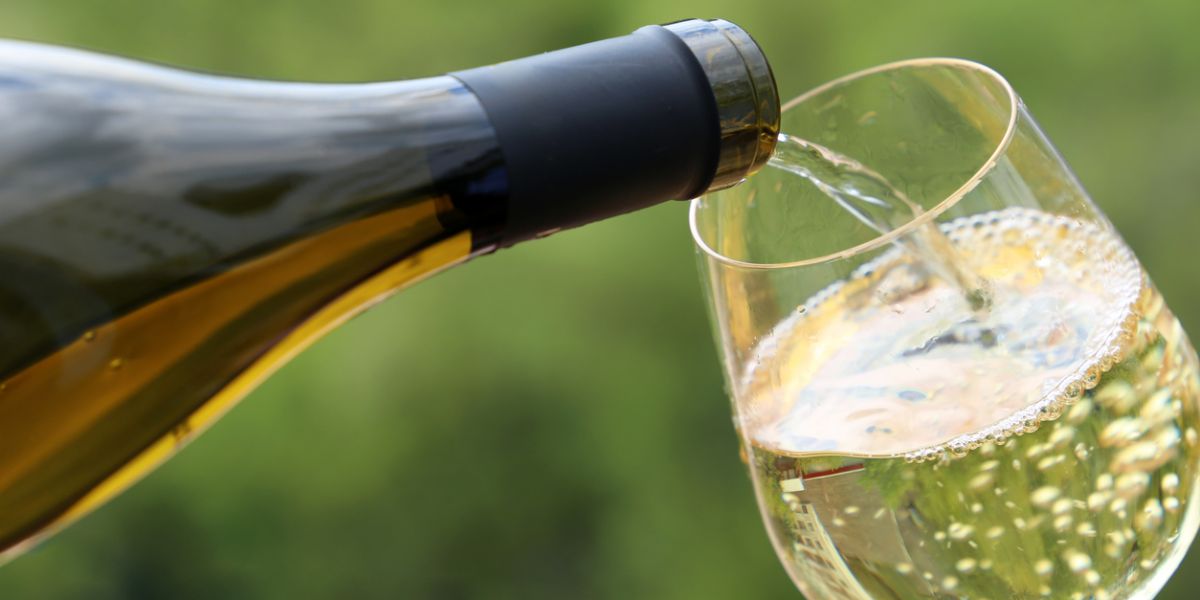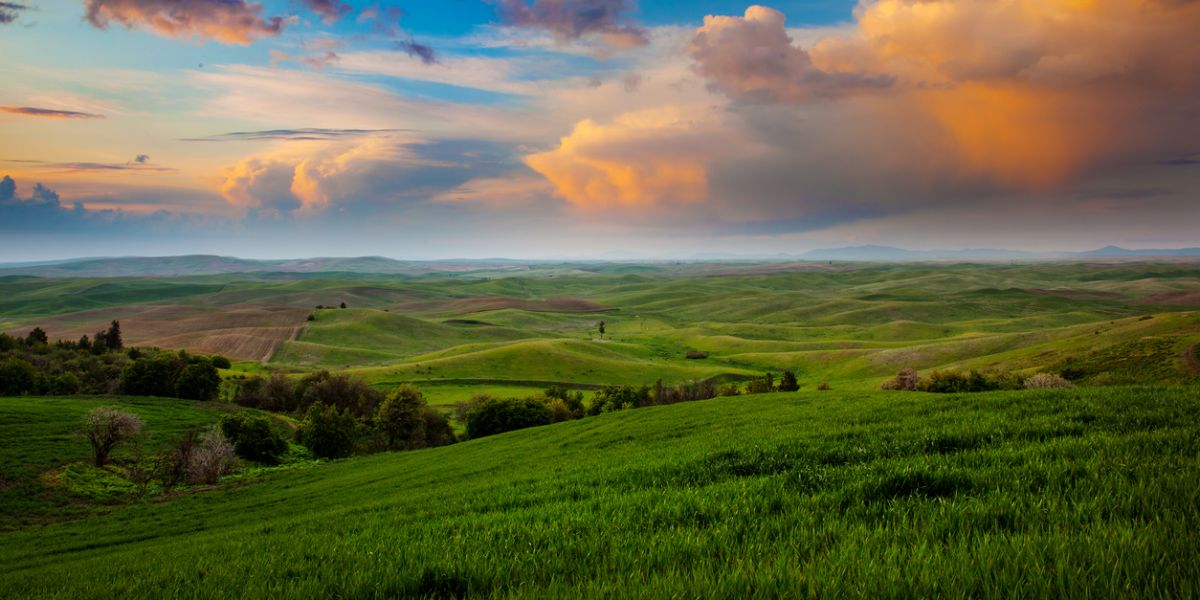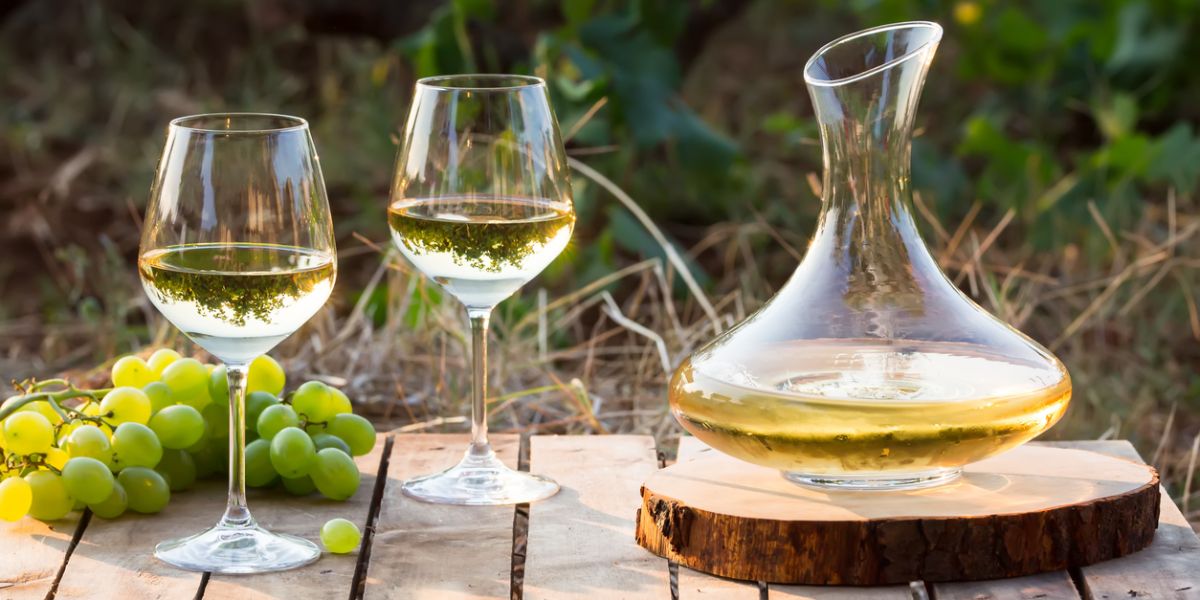What Wine Should I Bring to the Cookout?
Few things match the power of a summer cookout. With the scents wafting off the grill, the beautiful table, the music in the background, and the chance to spend some quality time with your best friends, a summer cookout, accompanied by wines for cookouts, is often what makes the season great.

If you’re bringing the wine, though, you want to select one that’s going to go well with the food and taste amazing. If you’ve spent hours asking yourself, “What wine should I bring to the cookout?” don’t worry! Choosing wines for cookouts doesn’t have to be tough. Consider one of these options.
A Great Pinot Noir:
When it comes to tomato-based sauces, you can’t go wrong with a Pinot Noir. Our 2021 Rainstorm Pinot Noir has the ability to use its taste profile enhanced with red berries, bright cherries, and pomegranate to match the power of the sauce.
This wine is also perfect with grilled salmon because the fruit flavors and moderate tannins can work nicely with the rich flavors presented by salmon. It will also pair well with smoky grilled vegetables.
A Classic Cabernet Sauvignon:
Hearty grilled red meats deserve our 2020 Silver Totem Cabernet Sauvignon. If you’re thinking about steaks on the grill, this is the ideal wine thanks to the structured tannins.
You’ll find that it’s distinct enough to help balance your palate, and the flavor concentration includes currant and blackberry, which offers an intensity that can match flank steak, ribeyes, and more.
A Light Pinot Gris:
If you’re getting creative with your grill and serving something with a sweet honey-barbeque-based sauce or a grilled fruit like peaches or pineapples, our 2021 Rainstorm Pinot Gris is the ideal option. A refreshing choice, you’ll find a flavor profile that includes stone fruits balanced by fresh acidity. Crisp and flavorful, serve it well chilled for those hot summer evenings.
An Elegant Rosé:
When you want a wine that looks as beautiful as the table will, you can’t go wrong with our 2021 Rainstorm Pinot Noir Rosé. Not only does it look simply amazing in the glass, but it also pairs well with seafood on the grill.
The bouquet here is summer itself featuring strawberry and rose petals, and the taste is crisp elegance redefined. You’ll find a complex burst of flavor that is ideal with a variety of other flavors as well including your grilled appetizer course.
An Extraordinary Red Blend:
If you’re serving something with a spicy rub or sauce or you’ve selected heavier cheese options to pair with your meal, a red blend like our 2018 Thick Skinned Red Mountain is a perfect choice.
The bouquet of cocoa, sweet coconut, dark berries, vanilla, and cherries is amazing, and the mouth feel offers firm tannins that can stand up to the spice of any dish. The perfect complement for a great barbeque, it will highlight whatever is being served in a way other wines simply cannot.
Bring the Best Wine to the Cookout
Cookouts create summer memories you can look back on as the chill of fall begins to set in. Choosing the right wines for cookouts is a great way to help everyone relax and enjoy the time together. Take a look at our complete selection to choose a few bottles that are ideal for your next cookout invitation.
What Are Hybrid Grapes?
Vitis vinifera - It’s the European grapevine you know that produces grapes like Chardonnay, Cabernet Sauvignon, Merlot, and Pinot Noir. It’s centuries in the making. What you may not know, though, is that technology and viticulture have been advancing for quite some time, and today, many winemakers are turning away from Vitis vinifera and toward hybrid grapes.

Just by crossing Vitis vinifera with other grapes that have been created, the other tannins and acid structures completely change. While very few vineyards use these hybrids - less than 5% by most estimates - the reality is that with the continually changing climate around the world, hybrid grapes may be the solution to many problems.
What are hybrid grapes, though, and how are hybrid grapes made? This quick guide will walk you through everything you need to know about these grapes and how they might affect your next bottle of wine.
What Are Hybrid Grapes?
Hybrid grapes are a lot like other hybrid crops created today. They’re the offspring of two different grape varietals that either happened naturally or occurred in a lab. Some hybrids are fairly well-known and have been part of the wine world for years. For example, Cabernet Sauvignon is a natural hybrid that came from crossing Cabernet Franc and Sauvignon Blanc. The world of wine simply wouldn’t be the same without it.
These days when you see the term hybrid grapes used, though, you’re probably not hearing about those kinds of crosses. Instead, you’re hearing about the kinds of creations that have taken place in a lab to create a newer, stronger varietal for various climates.
How Are Hybrid Grapes Made?
Hybrid grapes are made when breeders choose two varieties based on specific traits like tolerance in certain climates or flavor characteristics. The seed parent receives pollen from the pollen parent by transferring pollen grains to the stigma of the female flowers. Those fertilized flowers develop into a grape berry, which contains seeds.
Each one carries a combination of genetic material from both parent vines. They’re then planted in a controlled environment, and the seeds are stratified to help stimulate germination. The seeds turn into seedlings, and they’re carefully observed to see what characteristics are prominent. The most promising seedlings are further propagated, evaluated, and tested to see how they might survive in a real world setting. If things look good, they’ll be propagated through grafting or tissue culture to make certain the new variety maintains the original traits, then it is cultivated on a commercial scale.
This process is not a fast one. It can take many years and multiple generations of plants. What’s more, though, is that it doesn’t always work as planned, and must be carefully monitored throughout.
Where are Hybrid Grapes Being Used?
For the most part, hybrid grapes are being used throughout the U.S. and Canada. Since the very beginning, winemakers in the U.S. have been considered outliers, continually experimenting and changing the process, and today, you’ll see lots of hybrid grapes being used in the Northeast and in the Midwest.
While more established growers like those in Washington, Oregon, and California, tend to stick to more established grapes, small wineries almost everywhere are starting to use the hybrids, and that’s not a trend that will likely change soon.
In Canada, hybrids have been adopted again and again on both coasts because they grow better in cooler temperatures. Adding grapes to climates across the North American region where they’ve never grown before is becoming more popular, and those regions that are really taking off tend to use hybrids.
They’re used in wine-adjacent drinks like vinous ciders and piquettes, as well as organic wines because they tend to be much hardier than traditional grapes.
Today, there are several different varieties. Here are just a few.
Frontenac: There’s a Blanc, Gris, and Noir version of this one out there, and they tend to be really popular in Vermont and Minnesota. They’re low on tannin and high on acidic properties, making them a great choice.
Seyval Blanc: This one tends to be most popular in Canada and in the midwestern U.S. It’s great for sparkling wines, and it’s sometimes blended with Sauvignon Blanc and Riesling for beautiful results.
Marquette: This one is primarily used in Vermont and New York, and it makes a red wine that seems a bit reminiscent of Pinot Noir if you were to add a bit of depth to it.
Vidal Blanc: Seemingly designed for ice wine in Canada, this option has fairly high acidity levels and a thick outer skin, making it perfect for colder regions. It’s resistant to fungal diseases too.
Hybrid grapes are going to continue to be part of the wine world, particularly when people are looking for something different all the time. As they begin to get the respect they deserve, they’ll only spread further to create many new options even outside of North America.
Which is Sweeter: Riesling or Pinot Grigio?
Close your eyes and imagine the perfect glass of wine. Is it dry or something on the sweeter side? Surveys indicate that many wine lovers tend to prefer something on the sweeter side. There are many different reasons for that, too. Many people just naturally enjoy sweet wines because they offer a pleasant flavor profile that hits the ideal note. They’re often seen as an indulgent treat for people.

They’re incredibly versatile, too, because they can complement many different dishes like spicy foods and dessert courses. Perhaps most importantly, though, they offer that perfect balance combining sweetness and acidity that counterbalance each other. As you shop for the ideal wine for dinner or an upcoming event, though, you may wonder about what wine is best. Which is sweeter - Riesling or Pinot Grigio? Which one is your next perfect purchase?
A Bit of History
Both Riesling and Pinot Grigio have a long history. Pinot Grigio first appeared in the 13th century. Pinot Grigio initially appeared as a mutation of the Pinot Noir grape variety. Pinot Grigio likely appeared in the Burgundy region of France in the earliest days of this wine. Its popularity comes from the Alsace region of France, and by the late 19th century, the vines were being transported to Italy.
It grew well there, and Italy’s already well-established wine making culture quickly embraced the new variety. These days, this unique grape is cultivated in many other regions known for wine like Germany, Austria, Oregon, California, and New Zealand, though each region offers a unique expression of flavor.
Riesling has an equally long history that dates back centuries. Most believe this grape variety originated in the Rhine region of Germany near Rüdesheim. It was initially mentioned in a German vineyard inventory in the 15th century, but it may be older than that.
The popularity of this variety grew significantly, though, during the 19th century. Many wine connoisseurs discovered the beauty this variety has to offer, and it was quickly brought to other wine growing regions. Its versatility has helped it survive and production has expanded further than ever thought possible.
So, Which is Sweeter - Pinot Grigio or Riesling?
In most cases, wine lovers will tell you that a Pinot Grigio tends to be a bit sweet and a bit sour. That comes from the high levels of acidity in this wine. Instead of sweetness, you typically get a slightly more balanced wine when you open a bottle of Pinot Grigio. You’ll find it has a zesty feel, far more so than a Riesling.
A Riesling may feel a bit like a Pinot Grigio when you initially taste it thanks to the fact that they have many of the same flavor notes. They tend to be based on softer fruits including peaches, pears, and apples. Riesling, though, is sweeter. Every bottle tends to have a far higher sugar count, and in some cases, you’ll find that it has a deep honey characteristic you just won’t find with a Pinot Grigio.
It’s also a bit more versatile than a Pinot Grigio because even though it has a lower tannin count, it also has high levels of acidity, so the aging potential here is enormous. Letting a bottle sit in your wine cellar for a year or so will help deepen its flavor quite a bit. At the end of the day, if you’re asking the question “Which is sweeter - Riesling or Pinot Grigio?” you’re going to find that Riesling was made for those who truly love sweet wines.
Which Wine is Right for You?
If sweetness were the only factor, a Riesling is an ideal wine to meet your needs. For most people, though, taking other factors into account is a must. Typically, those other factors hinge on how the wine is being used. If you’re serving it with a meal, a Riesling tends to be a bit more versatile because it’s the perfect combination of sweet and acidic.
It works well with spicy foods like Asian and Indian cuisine as well as many different sweet foods like the entire dessert course at your table. It also pairs perfectly with rich cheeses if you want to serve it along with your appetizer course.
Pinot Grigio is drier, so it’s going to pair best with meats and cheeses. It also works well as a cooking wine, depending on the dish. If you have a savory meal you’re looking to pair the right wine with, you may want to use a Pinot Grigio.
No matter which wine you decide is right for the situation, you can always turn to Pacific Rim for some of the best wines available today. With many different varieties to fill your next glass, you’ll always find a perfect option. Take a look at what we have to offer now.
Which is sweeter: Moscato or Riesling?
Visiting Washington This Summer? Visit These Wine Regions
The weather is stunning, the days are long, and most people want to do nothing more than get outside and begin to explore. Summer is the perfect time to do so many things, including visiting the various Washington wine regions. Washington is nothing short of picturesque. With beautiful vineyards that seem to roll into each other, scenic landscapes all around you, and charming wineries dotting the countryside, you’ll find lots of opportunities to take in the view and create memories in this space that are tough to build anywhere else.

More than that, though, Washington wine country means a deeper insight into the process of how the wines you love are created and lots of opportunities to taste the wines themselves and the dishes so many of them have inspired. If you’re ready to experience summer wine tasting in Washington, though, what regions should you put on your itinerary? Here are the five you simply cannot afford to miss.
#1 - Columbia Valley
If you know anything about Washington’s wine region, you know that this is where 99% of the action happens. Located just east of the Cascades, the hot dry summers are perfect for grape growth. Nearly 80 different wine grape varieties are grown in the region, but the most commonly grown varieties are Cabernet Sauvignon, Chardonnay, Riesling, Merlot, and Syrah. Wines from this region tend to offer pure flavors that are hard to get anywhere else.
That could be due to the weather patterns you’ll find here. The daytime high can be quite hot, but overnight, it gets far cooler, so the acidic base of the wines can further develop. The dry climate helps too. Storms coming from the Pacific hit Seattle, dropping almost 40 inches of rain on the city each year. When the storms hit the Cascades, the rain or snow continues to fall, but that creates a bit of a shadow on the Columbia Valley, so the area gets just eight inches of rain each year.
#2 - Yakima Valley
Established shortly after Napa Valley was named a federally approved winegrowing region, nearly 25% of the grapes grown in Washington come from here. Technically a sub appellation of the much larger Columbia Valley, this is worth the visit because you’ll find Chardonnay, Rieslings, and Merlots being created in this space. In some wineries, you’ll also find Cabernet Sauvignon and Syrah being created in this valley.
The Syrah wines created here offer a diversity that isn’t available in other regions, incorporating both aromas and flavors of blueberry and raspberry as well as savory herbs, smoked meat aromas, and olive hints.
Other red wines created in this region mean a softer tannin profile that you won’t find outside of Yakima Valley. Often you’ll find orange rind accents in these varieties and a number of other unique flavors.
#3 - Red Mountain
The smallest appellation in Washington, there are just 4,040 acres of land here. It is a sub appellation of Yakima Valley. The temperatures are quite warm here, so you’ll find mostly red wines being grown in the area. Cabernet Sauvignon is the primary type of wine you’ll see in Red Mountain, as nearly 60% of the planted acreage is devoted to that wine. Merlot and Syrah are also planted extensively here.
From bottom to top, the elevation of this area varies by 1,000 feet, and the heat of the summer and constantly blowing winds mean the grapes are small and have thick skins. The Cabernet Sauvignon and Bordeaux blend that result from those grapes ages well, and that means one bottle you buy from this region could be the perfect choice a few years from now.
#4 - Walla Walla Valley
If you’re looking for true natural beauty, Walla Walla Valley is the single best place to visit. Here you’ll find rolling wheat fields next to the beauty of the Blue Mountains. You’ll also find more than 120 wineries and tasting rooms, making it the perfect place for summer wine tasting in Washington.
This area is primarily known for Syrah, but you’ll also find Cabernet Sauvignon and Merlot created here as well. The Syrahs you find here offer an earthy flavor that is both strong and savory. The mouthfeel with these is soft and gentle. The flavor profiles with these wines often include black olive and smoked meat, as well as a fire pit.
#5 - Woodwinville Wine Country
This may not make most lists because it’s not a designated AVA, but it’s absolutely one of the Washington wine regions you should see. Just a half hour from Seattle, there are many wineries in this agrarian center, and it's easy to access from other parts of the state.
You’ll find great blends and lots of different events here, so if you’re planning a trip, this should be a stop that’s high on your list. Numerous wineries in this space import grape grown east of the mountains, and the beauty of the area is unparalleled. Feel free to stroll the streets and enjoy live music and the various tasting rooms.
Stop By and Visit Us!
No matter where you plan to be this summer in Washington, be sure to make a stop at Pacific Rim. It’s the perfect way to taste everything we have to offer.
Which is Sweeter: Moscato or Riesling?
Two of the most popular white wines in the world today are Moscato and Rieslings. Both offer the perfect level of sweetness, a quality many of those who haven’t previously been fans of wine look for. They’re smooth, easy to drink choices that pair well with many different dishes. Crisp and refreshing, they’re often considered the ideal choice.

Trying to find the next bottle to add to your wine rack, though, can be a little confusing, especially if you love sweet wines. Given that both are so popular, knowing the answer to the question “Which is sweeter: Moscato or Riesling?” can help significantly. It may also help to know a bit about the differences between these two varieties.
First Things First: What is Sweeter - Moscato or Riesling?
In most cases, you’re going to find that Moscato is sweeter than a Riesling. The reality, though, is that it’s difficult to tell you that every Moscato or Riesling you pick up is going to be sweet, which makes it a little hard for these wines to go head to head in terms of sweetness. On the whole, though, if you’re looking for the sweetest option between those two choices, you should get a bottle of Moscato.
Understanding Both Wines
As you consider which wine is sweeter, it may help to better understand both the aromas and flavors behind Rieslings and Moscatos. Both have fairly similar profiles. Citrus fruits like lemons and limes as well as stone fruits like peaches and nectarines tend to be something you’ll notice with both Rieslings and Moscatos. In most cases, you’ll be able to describe either one as floral, as you may smell rose, white flowers, and many other blossoms when you open the bottle. You’ll also find a crisp, refreshing taste with each glass of Riesling or Moscato.
The similarities between these two wines, though, tend to end there. Moscato is made from the Muscat grape. It’s in the same family as a Muscat wine, but the Moscato is much sweeter. A Muscat wine tends to be quite dry and has a fairly high alcohol level. The grape itself was initially grown in the Mediterranean region. Muscat grapes date back to the Ancient Greeks, but they could be far older. Today, they’re grown across the world.
Riesling grapes are from Germany. They date back to the 15th century for certain, but they probably date back a bit further than that. Every year, March 13th is celebrated as Riesling’s birthday because March 13, 1435, is the first documented date that a Riesling wine was sold. As with Moscatos, today, Rieslings are grown across the world.
Rieslings offer far more variety than Moscatos do, though. You’ll find that Rieslings range from quite dry like our 2021 Dry Riesling to intense sweetness like the 2021 Sweet Riesling. The level of residual sugar in them
depends entirely on the winemaker. Crisp and refreshing, though, they maintain a perfect balance between sweetness and acidity levels. As a result, even when these two wines have exactly the same levels of residual sugars, a Riesling may seem slightly less sweet thanks to the acidity that is involved with this wine.
It may feel a bit heavier on your palate as well. Think of the difference between a peach just off the vine and a glass of cool lemonade in the summer. The difference between these two wines is quite similar. The Moscato is more likely to be that peach right off the vine. The Riesling, though, balances the sweetness with the acidity creating a refreshing feel just as lemonade might.
How are Sweet Wines Made?
Wines get the level of sweetness inside them from the grapes themselves. When grapes are ripe, there’s quite a bit of sugar in them, which is essential to the process of fermentation. The yeast eats the sugar, and that makes alcohol. In some cases, though, sugar is left after that process, and the more residual sugar that is left, the sweeter the wine will be. As a result, with sweet wines, the sugar level in the grapes needs to be quite high the moment the fermentation process begins.
There are many different ways that winemakers create that sweet wine you eventually purchase. They can harvest the grapes later in the season. The reason behind that is that the longer a grape stays on the vine, the sweeter it may be. Winemakers have other options, too. By drying the grapes in the sun, they have the ability to concentrate the sugars inside them. You can learn more about this process in our blog post on the Riesling growing cycle.
Conversely, they can freeze them to create a higher concentration of sugar, as in the case of our 2016 Pacific Rim Ice Wine Riesling. By far, however, the most common way to create the sweetness you might find in a Riesling or a Moscato is by stopping the fermentation process early at between six and eight percent alcohol so there is plenty of remaining sugar to create a sweeter wine.
Finding the Right Sweet Wine to Meet Your Needs
Whether you go with a Moscato or a Riesling, there are a few different ways you can simply look at a wine label and decide just how sweet it might be. The first is by looking at the ABV, or alcohol by volume level. If the alcohol level is fairly low, the wine will be fairly sweet. A sweet Riesling tends to have between seven and nine percent ABV, while a Moscato usually has between five and eight percent ABV.
Remember that you don’t just want to factor in how sweet a wine is as you select the right one. You may also want to think about how you’re serving it. If you’re serving wine with a meal, both Riesling and Moscato go well with fruit, honey glazed meats, and anything that incorporates a balance of sweet and sour flavors. They also both work well with spicier foods. Rieslings tend to taste fantastic with richer foods like pork dishes, too. Find out more about the Best Riesling Pairings on our blog.
No matter what flavor you’re looking for, at Pacific Rim, we have the variety you want most. Let us help you find your next perfect bottle. Take a look at the sweet wines and Rieslings we have to offer to help complement whatever comes next for you.